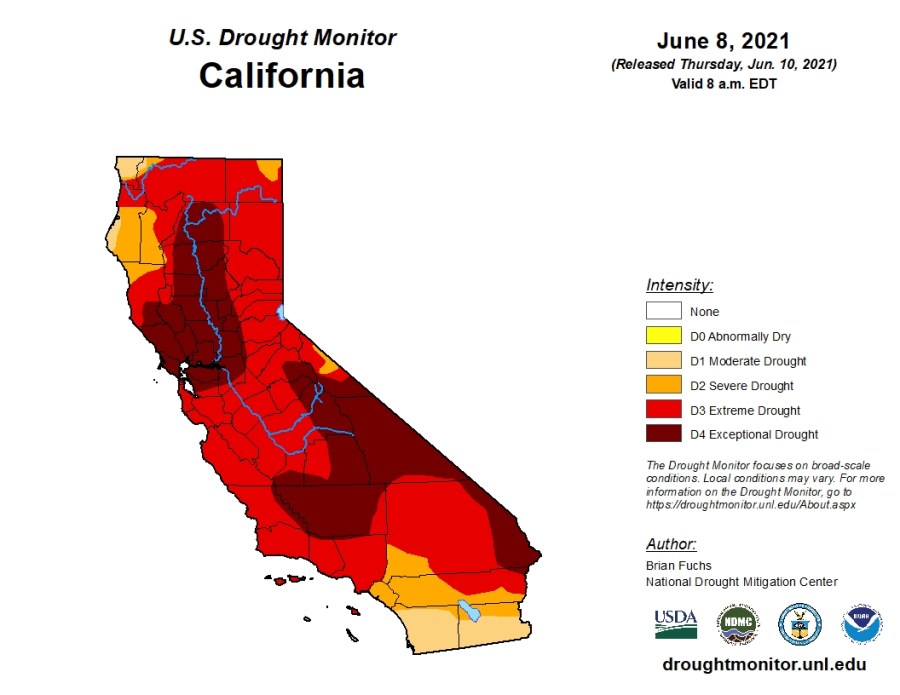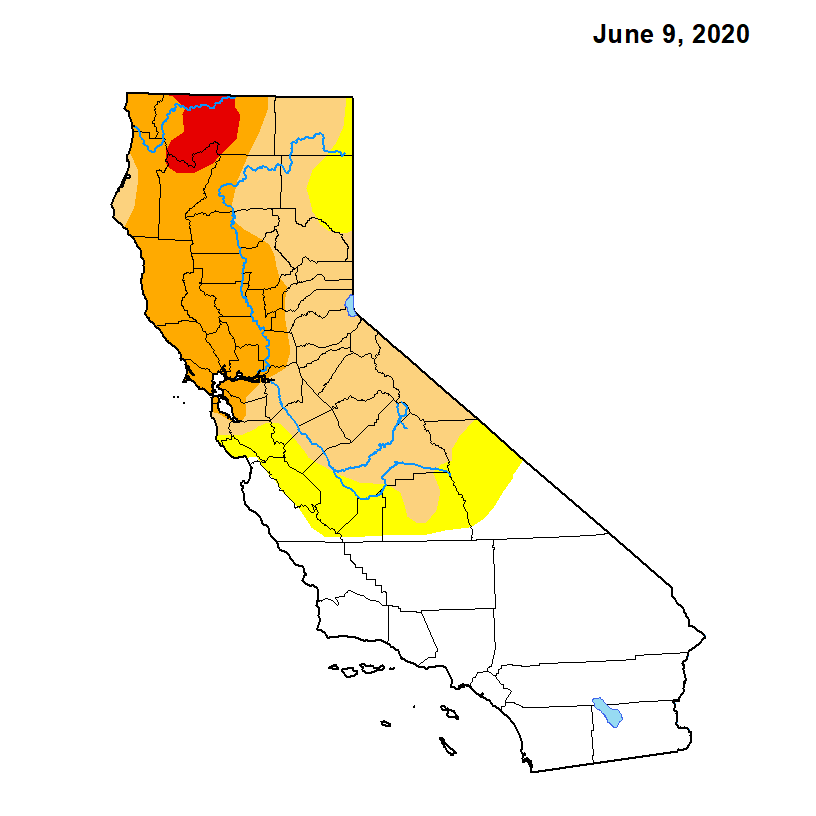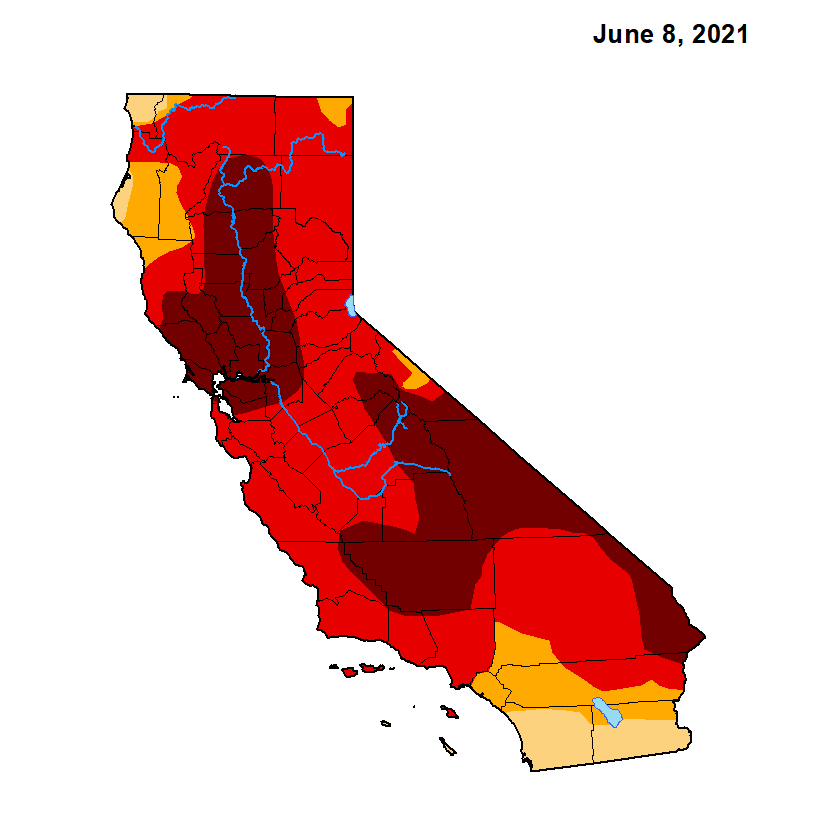Amid rising temperatures, low humidity and intensifying drought conditions, California is seeing an increase in wildfire activity and acres burned this year, even compared to last year’s record-setting figures.
As of this week, the state has already seen a 26% increase in wildfire activity compared to the same time period in 2020, according to Cal Fire. The agency has also seen a 58% increase in acres burned compared to last year.
“We had a dry winter and spring, so there’s more dry vegetation and dry fuels,” said Christine McMorrow, an information officer with Cal Fire. “With the dry fuels and dry fuel moisture conditions and human activity, it’s easier for sparks to take off.”
The state is facing a critically dry year and, with summer approaching, that portends another devastating wildfire season.
Cal Fire data shows that from Jan. 1 to June 6 this year, California has already seen 2,733 wildfires that have scorched roughly 12,540 acres, compared to 2,052 fires that burned 6,353 acres within the same time frame as last year.
“The number of fires and acres burned this year is already far above the five-year average,” McMorrow said. “We know we’re going into a season with already more fires and more acres burned.”
Last year marked California’s largest wildfire season on record, with more than 4 million acres burned and more than 30 lives lost. The flames were fueled by dry winds and record-high temperatures, both of which exacerbated low moisture levels in the vegetation, making them primed to ignite.
Meanwhile, more areas of the state entered the most severe drought category in this week’s U.S. Drought Monitor report. More than 33% of the state was under “exceptional drought” conditions, the most severe category, according to the U.S. Drought Monitor. Last week, that number was around 26%.
“California continued to see the impacts of drought increase, and there was expansion of extreme and exceptional drought in the northern and central areas as well as along the coast of central California,” this week’s report stated.
The latest map from the drought monitor shows that most of Los Angeles, San Bernardino and Ventura counties are experiencing extreme drought conditions, while Orange and Riverside counties are in severe drought.

Compared to a year ago around this time, no part of the state was classified under exceptional drought. In early June 2020, only 2% of the state was in “extreme drought” — the second highest drought category.
But this year, more than 85% of California is under extreme drought, and all areas of the state are in some stage of drought, according to the data.
The effects of a devastating, prolonged drought are being seen across the West.
Levels in Lake Mead along the Nevada-Arizona border — a key Colorado River reservoir and the largest by volume in the U.S. — dipped to historic lows Wednesday evening.
“We’re really encouraging people to pay attention to the fire conditions and what they’re doing,” McMorrow said. “We need everybody to do their part to prepare for wildfires.”























